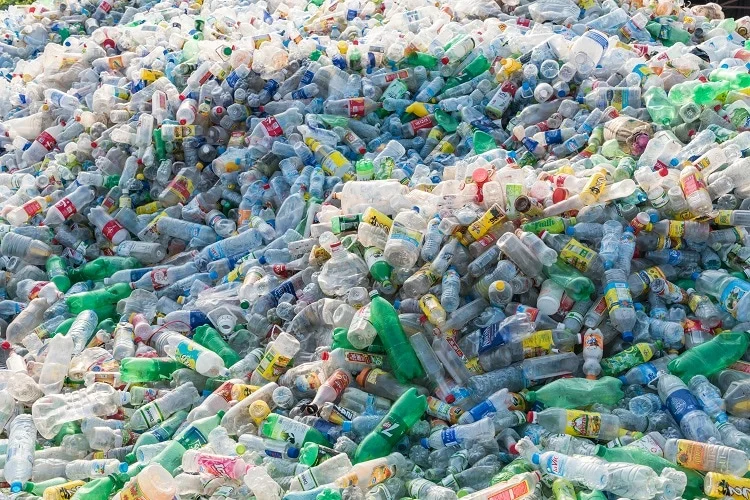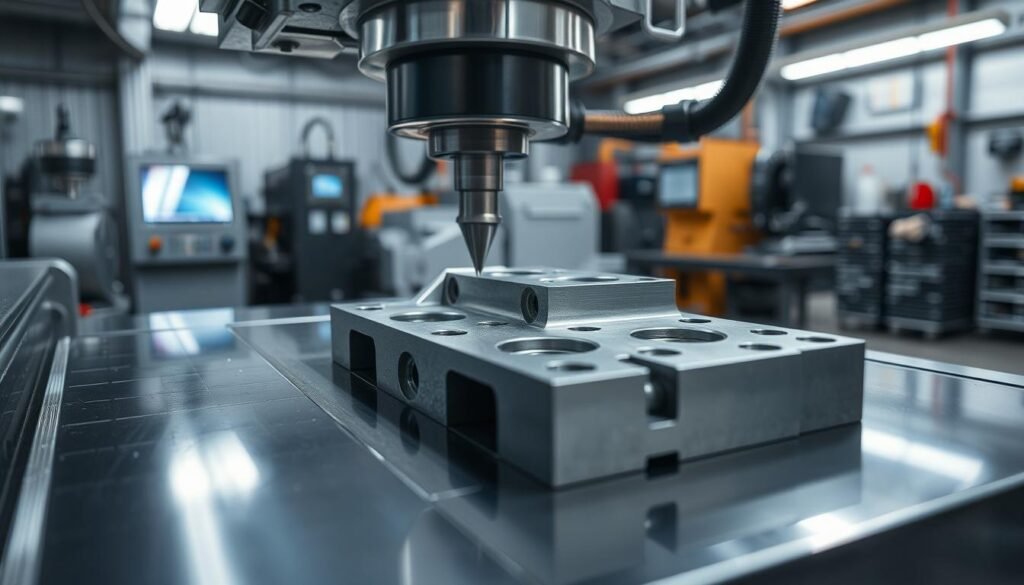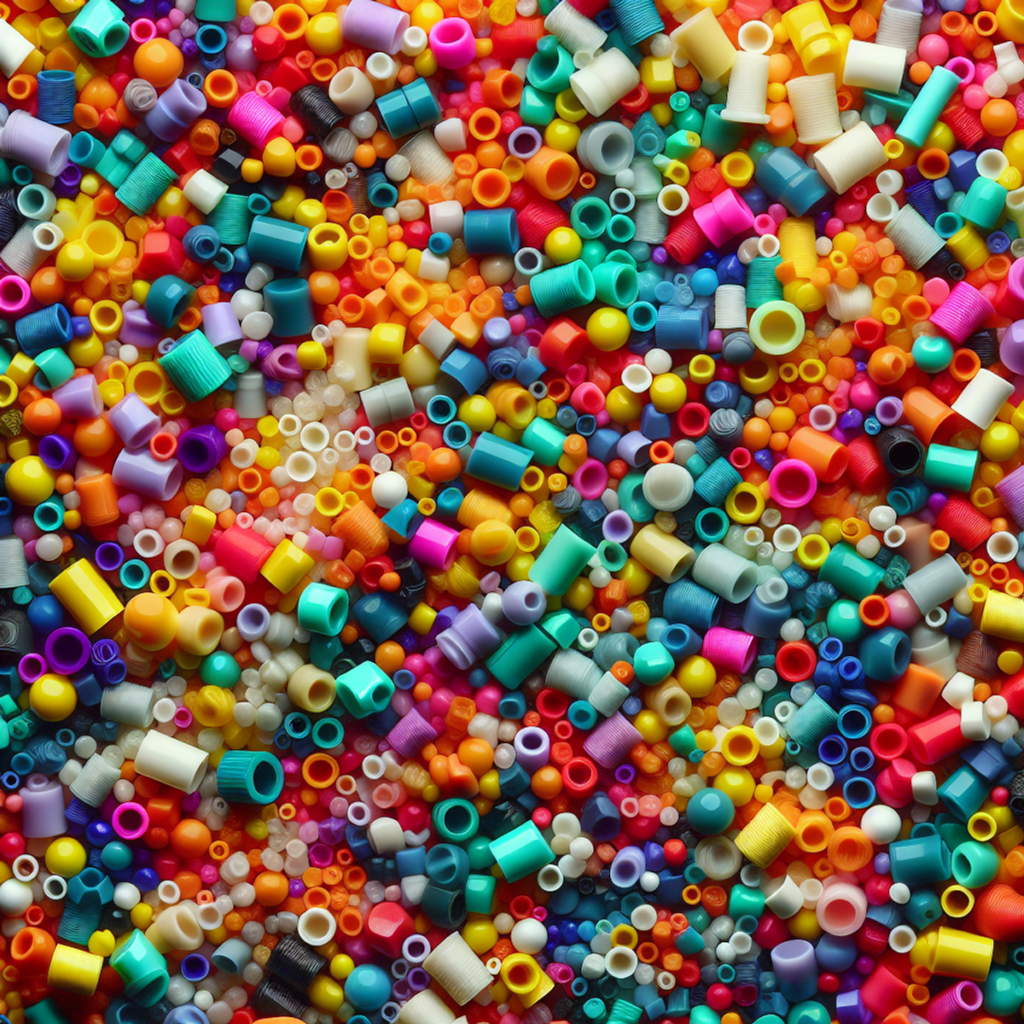Introduction
Marine litter, primarily composed of plastic waste, poses a severe threat to our oceans and marine life. Plastics make up at least 85% of total marine waste, significantly impacting ecosystems, wildlife, and human health. The pollution comes from human activities on land, such as inadequate waste management and solid waste leakage.
Addressing marine litter and plastic waste pollution is crucial for protecting the environment. Innovative solutions like using specialized machines can play a crucial role in reducing this crisis. Machines designed for efficient waste management and recycling help decrease the amount of plastic entering our oceans, thus protecting marine biodiversity.
Thesis statement: This article explores the role of machines in addressing the global marine litter crisis and provides practical ways for individuals to contribute to the cause.
Understanding Marine Litter and Plastic Waste Pollution
The Threat of Microplastics
Microplastics are a growing concern within the realm of marine litter and plastic waste pollution. These tiny plastic particles, often less than 5 millimeters in size, pose significant risks to marine environments. They are categorized into two types: primary microplastics and secondary microplastics.
Primary Microplastics: These are small plastics that were originally manufactured to be microscopic in size. Common examples include:
- Microbeads used in personal care products like exfoliating scrubs and toothpaste.
- Pre-production plastic pellets or “nurdles”, which serve as the raw material in plastic manufacturing.
Secondary Microplastics: These result from the breakdown of larger plastic debris. Over time, exposure to environmental factors such as UV radiation, wind, and wave action causes these plastics to fragment into smaller pieces. Examples include:
- Plastic bottles and bags disintegrating into tiny fragments.
- Degraded fishing nets contributing to microplastic pollution.
Synthetic textiles also play a crucial role in the release of microplastics. During the production, use, and disposal stages of synthetic textiles, such as polyester and nylon fabrics, microfibers— a type of secondary microplastic— are shed into the environment.
Production Stage
During textile manufacturing, processes like weaving and dyeing can release synthetic fibers into wastewater. Without proper filtration systems in place, these fibers eventually find their way into natural water bodies.
Use Stage
Washing synthetic textiles is another significant source of microfiber pollution. Each wash cycle can release thousands of microfibers from garments into wastewater systems. Traditional washing machines lack the filtration capability to capture these tiny particles effectively.
Disposal Stage
When synthetic textiles reach the end of their life cycle, improper disposal exacerbates the issue. Discarded clothing items made from synthetic materials degrade slowly over time, releasing microfibers into soil and waterways.
Marine litter primarily composed of plastics has become omnipresent. Plastics account for at least 85% of total marine waste. This persistent problem stems largely from human activities on land related to inadequate waste management practices.
The environmental impact is not confined to visual pollution alone but extends deeply into ecosystems. Aquatic organisms ingesting microplastics mistake them for food, leading to physical harm and chemical contamination. These particles can travel up the food chain, posing health risks even to humans who consume seafood.
Understanding the pathways through which microplastics enter marine environments highlights the importance of innovative solutions like advanced filtration systems in washing machines or improved wastewater treatment technologies.
Addressing this threat requires concerted efforts across multiple fronts—from enhancing production processes to developing consumer awareness about proper disposal methods for synthetic textiles—to mitigate the ongoing crisis caused by marine litter and plastic waste pollution.
Impacts of Microplastics on Ecosystems and Human Health
Microplastics, which come from sources like industrial pellets and broken-down synthetic textiles, are a big problem for both marine ecosystems and human health. These tiny bits of plastic end up in many different parts of the environment, causing a range of issues.
1. Adverse Effects on Marine Ecosystems and Biodiversity
Microplastic contamination has serious consequences for marine ecosystems:
- Disruption of Food Chains: Small marine creatures eat microplastics, and then bigger animals eat those creatures. This affects the entire food chain.
- Harm to Marine Life: Eating microplastics can physically hurt marine animals by blocking their digestive systems. This can make them sick or even kill them.
- Chemical Pollution: Microplastics often have harmful chemicals on them that seep into the ocean, hurting plants and animals that live there.
Let’s look at an example: when tiny animals called zooplankton eat microplastics, it causes problems for fish and other creatures that rely on them for food. The whole ecosystem suffers because these base organisms have less energy and trouble reproducing.
2. Potential Risks to Human Health
Microplastics also affect people in these ways:
- Eating Contaminated Seafood: When we consume seafood that has microplastics in it, we end up swallowing those particles too. This could be a problem for our health in the long run.
- Exposure to Chemicals: Microplastics can carry harmful chemicals like phthalates and bisphenol A (BPA), which can mess with our hormones. If we eat seafood with microplastics, those chemicals might get into our bodies too.
Research shows that we might be taking in a lot of microplastics every year from eating seafood. This could lead to issues like swelling or harm to our cells.
These impacts show why we need to act fast and deal with the plastic waste in our oceans. We can reduce these risks by using new methods to clean wastewater and make textiles that are better for the environment.
Role of Machines in Preventing Microplastic Pollution
Microplastics are a pervasive issue, infiltrating water bodies and impacting marine life and human health. Upgrading wastewater treatment plants with specialized machines can significantly reduce microplastic release into the environment.
Advancements in Wastewater Treatment: Removing Microplastics with Machines
How Wastewater Treatment Plants Can Be Upgraded
1. Advanced Filtration Systems
- Installing advanced filtration systems, such as membrane bioreactors (MBRs), can enhance the removal of microplastics from sewage water. MBRs combine biological treatment and membrane filtration, effectively capturing particles as small as microplastics.
- Example: The use of ultrafiltration membranes has shown a high efficiency rate in filtering out microplastics, ensuring cleaner discharge into water bodies.
2. Electrocoagulation Techniques
- Electrocoagulation involves using electrical currents to destabilize and aggregate microplastic particles, making them easier to remove through conventional filtration methods.
- Benefits include the ability to target a wide range of pollutants, including microplastics, without the need for chemical additives.
3. Hydrocyclones
- Hydrocyclones utilize centrifugal forces to separate microplastics from wastewater. These devices are particularly effective for high-density microplastics that can be challenging to filter through traditional methods.
- The application of hydrocyclones in wastewater treatment plants has been studied extensively, demonstrating their potential in reducing plastic pollution.
4. Granular Activated Carbon (GAC) Filters
- GAC filters adsorb contaminants from water, including microplastics. By incorporating GAC filters into wastewater treatment processes, plants can achieve higher removal rates of these pollutants.
- Example: A study showed that GAC filters could remove up to 98% of microplastic particles from treated water.
5. Nanotechnology Solutions
- Emerging nanotechnology solutions offer promising advancements in trapping and degrading microplastics at a molecular level. Nanomaterials like graphene oxide have shown effectiveness in binding with microplastics, facilitating their removal.
- Research is ongoing to optimize these technologies for large-scale implementation in wastewater treatment facilities.
Challenges and Considerations
- Cost Implications: Upgrading existing wastewater treatment infrastructure with these advanced technologies requires significant financial investment. Municipalities need to balance cost considerations with environmental benefits when planning such upgrades.
- Maintenance and Operation: Advanced treatment systems often require specialized maintenance and operation protocols. Training personnel and ensuring consistent operational standards are essential for achieving optimal performance.
- Regulatory Compliance: Adopting new technologies must align with regulatory frameworks governing wastewater treatment standards. Continuous monitoring and adaptation of policies may be necessary to accommodate technological advancements.
Success Stories
Several regions have already begun integrating these advanced technologies into their wastewater treatment processes:
- Sweden: Swedish municipalities have implemented MBR technology across several treatment plants, achieving notable reductions in microplastic concentrations in treated effluent.
- Germany: German cities are piloting electrocoagulation techniques, reporting significant improvements in water quality and reduced presence of microplastics.
Investing in such advancements not only mitigates environmental impacts but also aligns with global efforts towards achieving cleaner oceans and healthier ecosystems.
Innovative Machines for Recycling Microplastic-Infused Textiles
Besides individual efforts, machines can also play a crucial role in addressing microplastic pollution. Here are some advanced technologies and innovative approaches that use machines to tackle this issue:
Advanced Filtration Systems in Wastewater Treatment Plants
The first step in reducing the release of microplastics is effective filtration. Wastewater treatment plants are now using advanced filtration systems specifically designed to capture microplastics.
- Membrane Bioreactors (MBRs): These systems utilize semi-permeable membranes to filter out even the tiniest microplastic particles from sewage water.
- Electrocoagulation: This process involves the use of electrolytic cells to clump together microplastics, making them easier to remove.
- Granular Activated Carbon (GAC): GAC filters are highly efficient at trapping microplastics due to their porous structure.
These innovations improve the ability of wastewater treatment plants to eliminate microplastics before they can enter natural water sources.
Emerging Textile Recycling Machines
The textile industry is a major contributor to microplastic pollution. Thankfully, there are now innovative machines that can recycle textiles containing microplastics, preventing them from becoming waste and polluting the environment.
- Hydrothermal Processing Machines: These machines utilize high temperatures and pressures in water to break down synthetic fibers into their basic components, which can then be reused.
- Mechanical Recycling Machines: These machines mechanically shred fabrics into fibers that can be spun into new yarns. This reduces waste while keeping microplastics away from ecosystems.
- Chemical Recycling Technologies: Chemical processes like depolymerization transform synthetic textiles back into their original building blocks, which can be used to create new plastics or fibers.
These state-of-the-art technologies not only minimize waste but also pave the way for a more sustainable textile industry by promoting circular economy practices.
Efficient recycling of microplastic-infused textiles through these advanced machines offers a promising solution to one of the most persistent environmental challenges. By implementing these technologies on a larger scale, it becomes possible to significantly reduce the harmful effects of microplastics.
Driving Policy Change and Promoting Circular Economy Approaches
Enforcing Bans on Single-Use Plastics through Policy and Legislation
Addressing marine litter prevention and plastic waste management at a systemic level often requires robust policy measures. One of the most effective strategies is enacting bans on single-use plastics. These policies not only reduce the amount of plastic waste generated but also drive significant behavioral changes among consumers and businesses.
Case Study: Rwanda’s Success in Banning Single-Use Plastics
Rwanda stands as a notable example of how legislative action can lead to tangible environmental benefits. In 2008, Rwanda implemented a nationwide ban on non-biodegradable plastic bags. This bold step was part of the country’s broader environmental conservation efforts aimed at combating plastic pollution.
Key Measures Taken by Rwanda:
- Legislation: The Rwandan government introduced strict laws prohibiting the manufacturing, importation, use, and sale of plastic bags.
- Enforcement: Rigorous enforcement measures were put in place, including penalties for violations and regular inspections to ensure compliance.
- Public Awareness Campaigns: Extensive public awareness campaigns were conducted to educate citizens about the harmful effects of plastic waste and the benefits of using alternative materials.
- Support for Alternatives: The government encouraged the production and use of eco-friendly alternatives such as paper bags, cloth bags, and biodegradable materials.
The results have been remarkable. Streets, markets, and waterways that were once clogged with plastic waste are now significantly cleaner. The reduction in plastic pollution has also contributed to improved urban aesthetics and health outcomes.
Impact on Behavior:
Rwanda’s policy measures have led to considerable shifts in consumer behavior. Businesses adapted by switching to environmentally friendly packaging options. Citizens developed habits centered around reusable materials. The success of this initiative highlights the critical role that policy measures play in driving societal change toward sustainable practices.
Promoting Extended Producer Responsibility for Plastic Products
Extended Producer Responsibility (EPR) is another vital approach in addressing marine litter prevention and enhancing plastic waste management. EPR policies make manufacturers responsible for the entire lifecycle of their products, including post-consumer waste management.
How EPR Works:
- Design for Environment (DfE): Manufacturers are incentivized to design products that are easier to recycle or dispose of in an eco-friendly manner.
- Collection Programs: Producers fund or operate collection programs to recover used products from consumers.
- Recycling Targets: Governments set mandatory recycling targets that producers must meet, encouraging higher rates of material recovery.
- Financial Responsibility: Producers bear the financial costs associated with collecting, recycling, or disposing of their products at end-of-life.
Case Study: EPR Implementation in Germany
Germany has effectively implemented EPR principles through its Packaging Act (VerpackG). This legislation mandates that producers take responsibility for the recycling and disposal of packaging materials they introduce into the market.
Key Features of Germany’s Packaging Act:
- Registration Requirement: All producers must register with a central authority before selling packaged goods.
- Recycling Quotas: Producers must meet specific recycling quotas based on the type and volume of packaging they place on the market.
- Eco-Modulation Fees: Companies pay fees based on the recyclability of their packaging materials – less recyclable materials incur higher fees.
- Consumer Education: Ongoing efforts are made to educate consumers about proper sorting and recycling practices.
Germany’s approach has led to high recycling rates and reduced environmental impact from packaging waste. It serves as a model for other countries looking to implement EPR systems effectively.
Moving Towards a Circular Economy
Incorporating comprehensive policy measures like single-use plastics bans and EPR schemes is essential for promoting circular economy approaches. A circular economy focuses on reducing waste by reusing, repairing, refurbishing, and recycling existing materials for as long as possible. This shift minimizes resource extraction pressures while fostering innovative solutions that contribute to sustainable development.
Benefits of a Circular Economy Approach:
- Reduces reliance on finite natural resources
- Minimizes environmental pollution
- Encourages innovation in product design and material usage
- Creates economic opportunities through new business models focused on sustainability
By understanding these policy approaches and their successful implementations worldwide, individuals can advocate for similar changes within their communities. Engaging with policymakers, supporting legislation aimed at reducing plastic waste, and adopting sustainable personal practices all contribute towards mitigating marine litter issues effectively.
Promoting Extended Producer Responsibility for Plastic Products
Extended Producer Responsibility (EPR) is a vital concept in marine litter prevention and plastic waste management. EPR shifts the responsibility of waste management from consumers to producers, forcing manufacturers to create products that are easier to recycle and more sustainable.
1. Design for Recyclability
Manufacturers are encouraged to create plastic products that can be easily broken down and reused. This involves using materials that are less harmful to the environment and adopting designs that facilitate recycling.
2. Take-Back Programs
Companies implement take-back schemes, where consumers return used products to the manufacturer for proper disposal or recycling. This helps prevent plastics from entering landfills or oceans.
3. Eco-Modulation of Fees
Producers pay fees based on the environmental impact of their products. Lower fees for recyclable and eco-friendly items incentivize manufacturers to adopt sustainable practices.
Importance of Holistic Strategies:
Addressing marine litter issues at scale requires a combination of policy interventions and circular economy approaches:
- Policy Interventions: Governments can mandate EPR through legislation, ensuring that all producers adhere to environmentally responsible practices. Policies could include single-use plastics bans, requiring companies to phase out non-recyclable materials.
- Circular Economy Approaches: Transitioning towards a circular economy involves rethinking product life cycles—from design and production to consumption and disposal—emphasizing reuse, repair, and recycling.
Examples in Coastal Areas:
Coastal regions often face severe plastic pollution due to proximity to oceans. Key initiatives focus on reducing plastic waste generation and promoting recycling efforts:
- Beach Clean-Up Drives: Organized by both governments and NGOs, these drives remove existing waste while raising awareness about marine litter prevention.
- Community Recycling Centers: Establishing centers dedicated to collecting and processing recyclable materials encourages local participation in waste management.
Extended Producer Responsibility holds significant promise in mitigating marine litter. By incentivizing sustainable product design and fostering collaborative efforts between policymakers, manufacturers, and communities, EPR plays a critical role in addressing the plastic waste crisis effectively.
Empowering Communities and Individuals to Take Action
Importance of Fostering Responsibility
Community engagement is vital in addressing the marine litter crisis. Encouraging local initiatives and behavioral changes among communities and individuals helps build a collective sense of responsibility. This communal approach ensures that efforts to tackle marine litter are sustainable and impactful.
1. Local Initiatives
Grassroots movements can drive significant change. Beach cleanups, river cleanups, and urban waste management projects empower residents to take direct action in their surroundings.
2. Behavioral Changes
Simple actions like reducing single-use plastics, proper waste disposal, and participating in local recycling programs contribute significantly to reducing marine litter.
Educational Campaigns and Outreach Programs
Raising consumer awareness about the impact of plastic waste on the environment is crucial. Educational campaigns and outreach programs target different demographics to foster an understanding of the issue at hand.
1. Schools and Universities
Integrating environmental education into curriculums helps instill eco-conscious values in younger generations.
2. Public Awareness Campaigns
Social media, public service announcements, and community workshops are effective tools for reaching a broader audience.
3. Corporate Involvement
Businesses can play a pivotal role by educating their employees and customers about sustainable practices.
Case Study: The Ocean Cleanup’s Community-Based Projects
The Ocean Cleanup organization exemplifies how community-based projects can make a difference. Their coastal cleanup and monitoring projects rely heavily on local participation.
“By involving communities directly, The Ocean Cleanup fosters a sense of ownership and responsibility towards maintaining cleaner oceans.”
Coastal Cleanups
These initiatives mobilize volunteers from local communities to remove debris from beaches and coastlines. By doing so, they prevent plastic waste from entering the ocean.
- Volunteer Engagement: Thousands of volunteers worldwide participate in these cleanups, creating a global network of environmentally conscious individuals.
- Data Collection: Volunteers also collect data on the types of litter found, helping to inform future policies and actions.
Monitoring Projects
The Ocean Cleanup also conducts monitoring projects to track the sources and types of marine litter. This data is crucial for developing targeted solutions.
- Community Involvement: Local residents assist in monitoring activities, providing valuable insights into regional pollution issues.
- Collaborative Efforts: Partnerships with local governments and organizations enhance the effectiveness of these monitoring projects.
By fostering a sense of responsibility through community engagement, educational campaigns, and successful examples like The Ocean Cleanup’s projects, we can collectively make strides towards mitigating the marine litter crisis.
Conclusion
Machines play a crucial role in addressing marine litter problems and offering creative solutions to tackle plastic waste pollution. Upgrading wastewater treatment plants with specialized machines can effectively eliminate microplastics from sewage water streams. Advanced machines also make it possible to recycle textiles that contain microplastics, preventing them from entering the ocean.
It is important for everyone to take action and work together to protect our environment:
- Governments should enforce policies and laws that promote sustainable practices.
- Communities and individuals must adopt responsible behaviors and support initiatives that deal with marine litter.
Here’s what you can do:
- Support technological innovations: Advocate for the development and implementation of machines that can reduce marine litter.
- Engage in local initiatives: Participate in community-based cleanup projects and educational campaigns.
- Promote policy change: Encourage policymakers to implement and enforce regulations aimed at reducing plastic waste pollution.
By utilizing the machine, we can make significant strides toward a plastic-free future.
FAQs (Frequently Asked Questions)
What is the significance of addressing marine litter and plastic waste pollution?
Addressing marine litter and plastic waste pollution is significant because it helps protect the environment from the adverse effects of these pollutants. By utilizing innovative solutions like machines, we can tackle the global marine litter crisis and work towards a plastic-free future.
What are primary and secondary microplastics, and how do synthetic textiles contribute to their release?
Primary microplastics are intentionally manufactured particles, while secondary microplastics are formed from the breakdown of larger plastic items. Synthetic textiles contribute to the release of microplastics during their production, use, and disposal stages, adding to the issue of plastic waste pollution.
What are some key sources of microplastics in the environment?
Key sources of microplastics in the environment include textile-related sources such as synthetic textiles. These sources contribute to the contamination of marine ecosystems and pose potential risks to human health through seafood consumption.
How can wastewater treatment plants be upgraded to remove microplastics more efficiently?
Wastewater treatment plants can be upgraded with specialized machines for more efficient removal of microplastics from sewage water streams. These advancements in wastewater treatment play a crucial role in preventing microplastic pollution.
What are some innovative machines and techniques for recycling textiles containing microplastics?
Advanced filtration systems in wastewater treatment plants can effectively capture microplastics, while emerging textile recycling machines can process fabrics containing microplastics. These technologies help prevent textile waste from entering the environment.
How do policy measures drive behavior change in reducing single-use plastics?
Policy measures such as bans on single-use plastics have been effective in driving behavior change. Success stories of countries or cities that have implemented such bans highlight the role of policy interventions in reducing plastic waste generation and promoting recycling efforts.
Why is it important to empower communities and individuals to take action against marine litter problems?
Empowering communities and individuals is important because it fosters a sense of responsibility in tackling marine litter issues through local initiatives and behavioral changes. Educational campaigns and outreach programs also raise consumer awareness about the impact of plastic waste on the environment.






